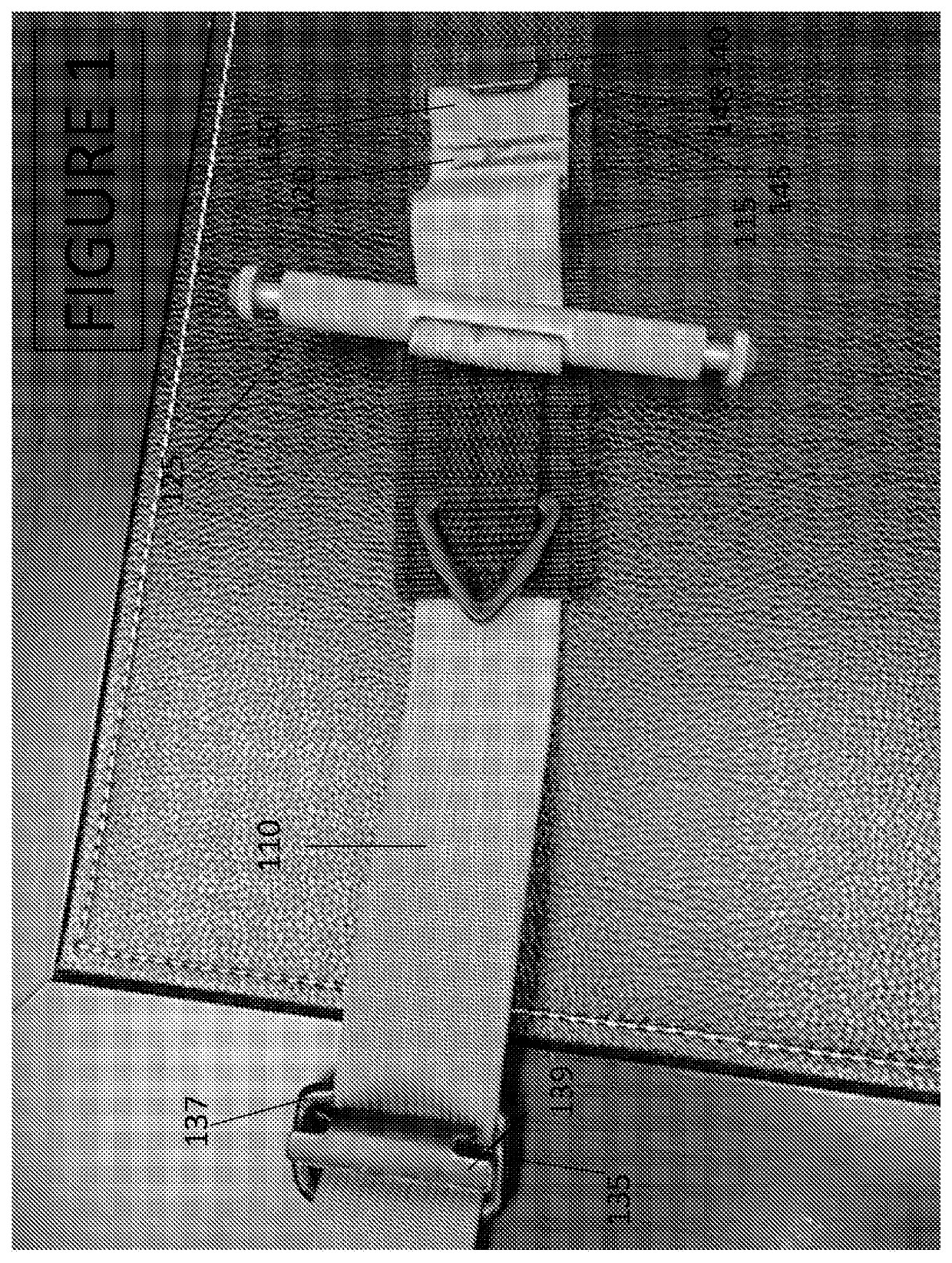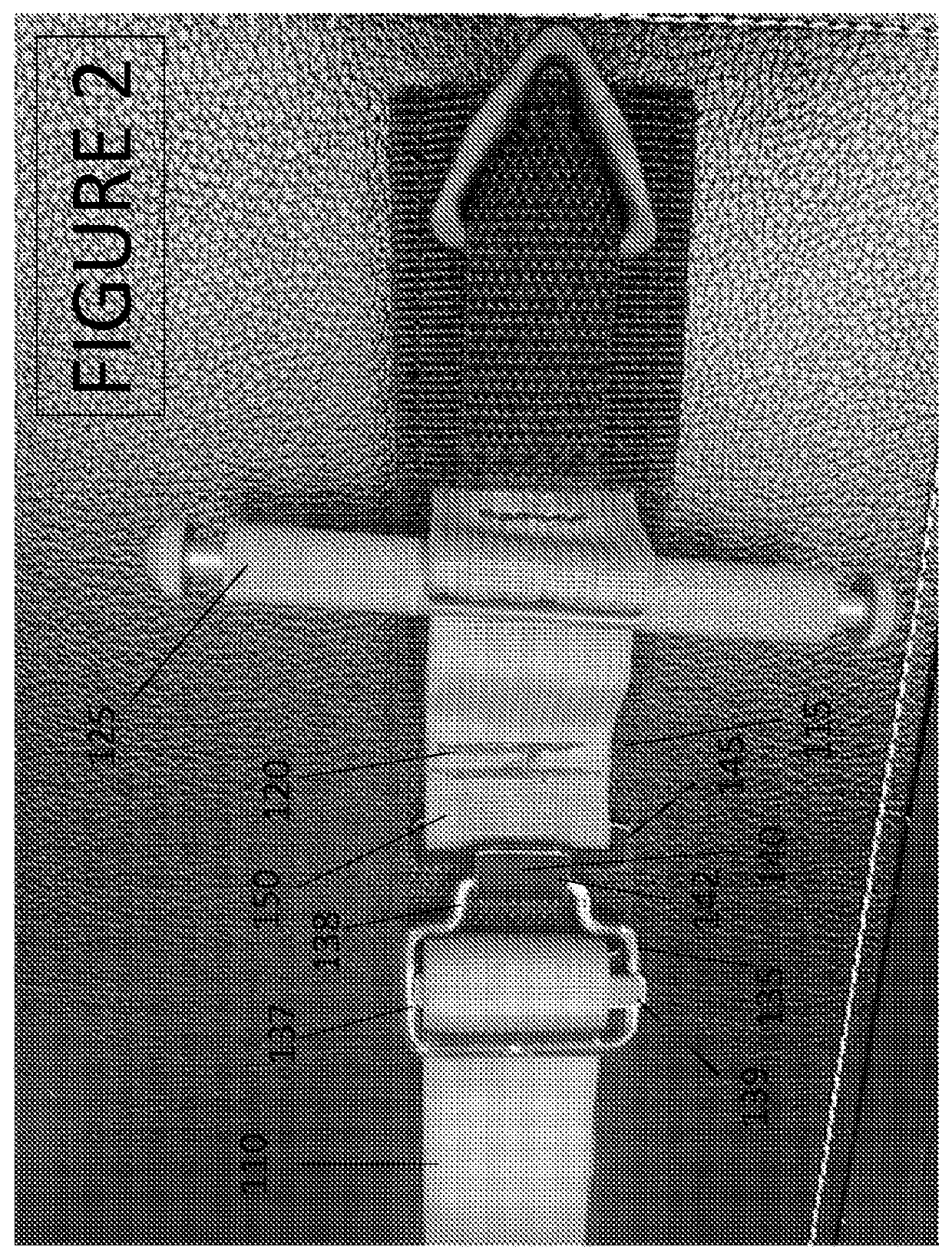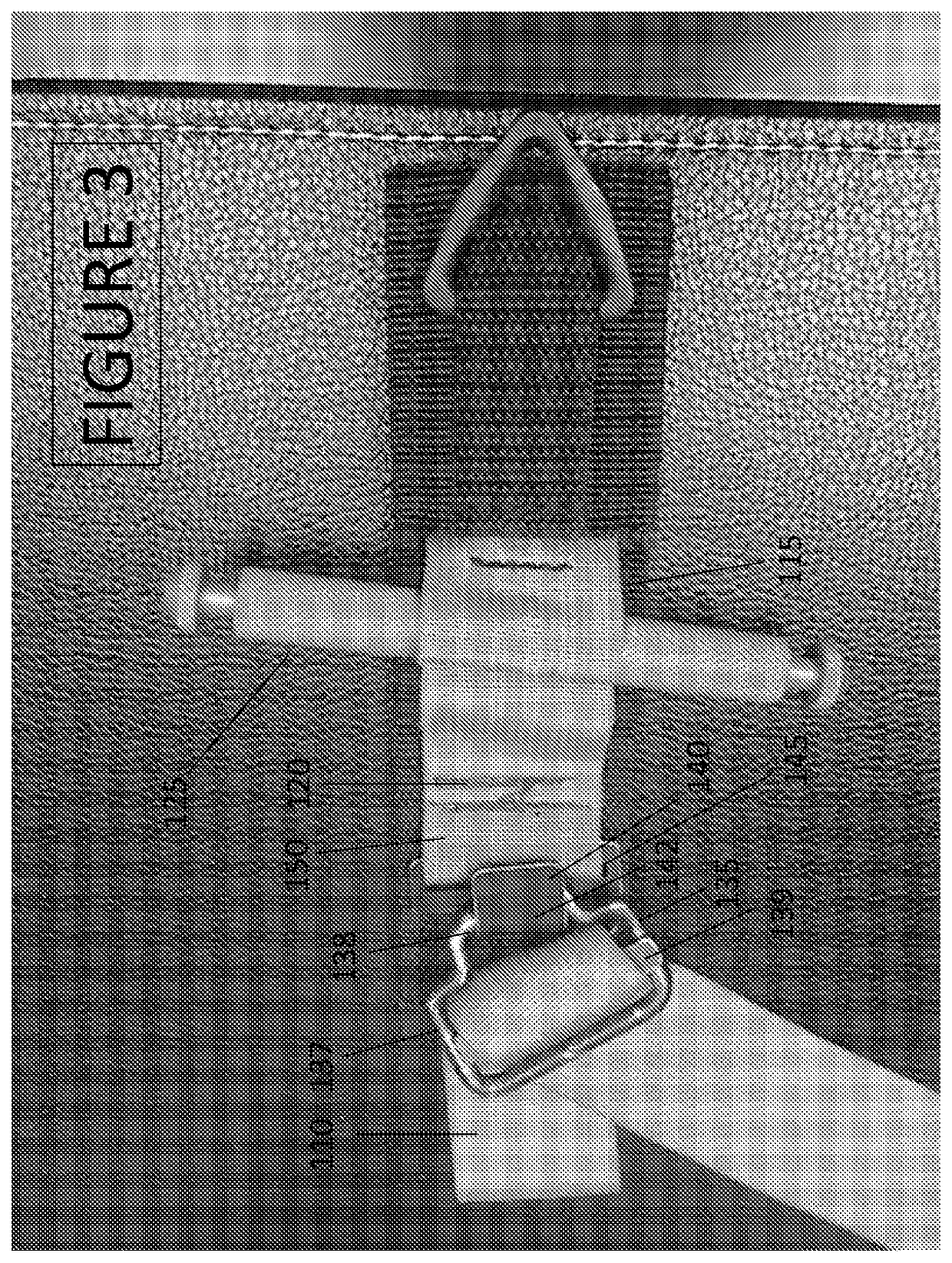Tourniquet Buckle Assembly
a technology of buckles and tourniquets, applied in the field of tourniquets, can solve the problems of difficult self-application of tourniquets, uncontrolled hemorrhage from trauma remains a major cause of death, and the difficulty of etc., to achieve the effect of convenient one-handed application of tourniquets
- Summary
- Abstract
- Description
- Claims
- Application Information
AI Technical Summary
Benefits of technology
Problems solved by technology
Method used
Image
Examples
example
[0040]A tourniquet of the type shown in FIGS. 1-9 has a buckle 135 and a buckle connector 140 made from metal. In this example, the buckle 135 has a cylindrical diameter D1 of approximately 0.187″. The buckle 135 has a step member 138 and a frame member 137. The frame member 137 comprises three sides of a rounded rectangle with a base length 137C measuring approximately 1.5″ excluding the rounded corners and extended length S including the abutting rounded corners and measuring approximately 2.0″. Sides 137A and 137B each measure approximately 0.937″ including one rounded corner and have a truncated width T excluding rounded corners that measures approximately 0.688″. Step member 138 has a total length U about equal to the frame extended base length S or approximately 2.0″. Raised edge 138A is centered in the buckle frame such that the center of raised edge 138A is approximately 0.750″ or about halfway in from frame base 137C. The raised stepped edge 138A has a length of about 0.760...
PUM
 Login to View More
Login to View More Abstract
Description
Claims
Application Information
 Login to View More
Login to View More - R&D
- Intellectual Property
- Life Sciences
- Materials
- Tech Scout
- Unparalleled Data Quality
- Higher Quality Content
- 60% Fewer Hallucinations
Browse by: Latest US Patents, China's latest patents, Technical Efficacy Thesaurus, Application Domain, Technology Topic, Popular Technical Reports.
© 2025 PatSnap. All rights reserved.Legal|Privacy policy|Modern Slavery Act Transparency Statement|Sitemap|About US| Contact US: help@patsnap.com



